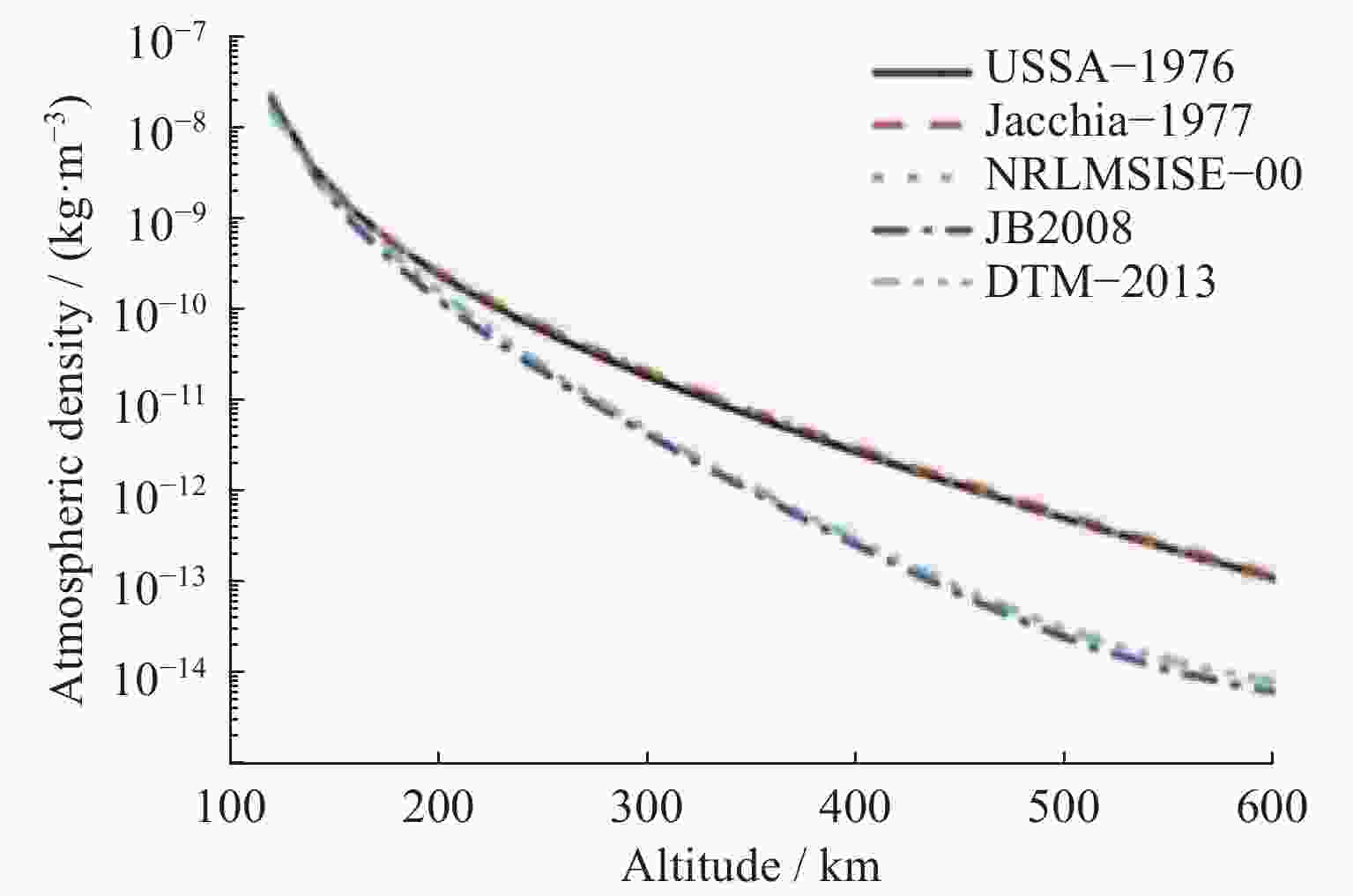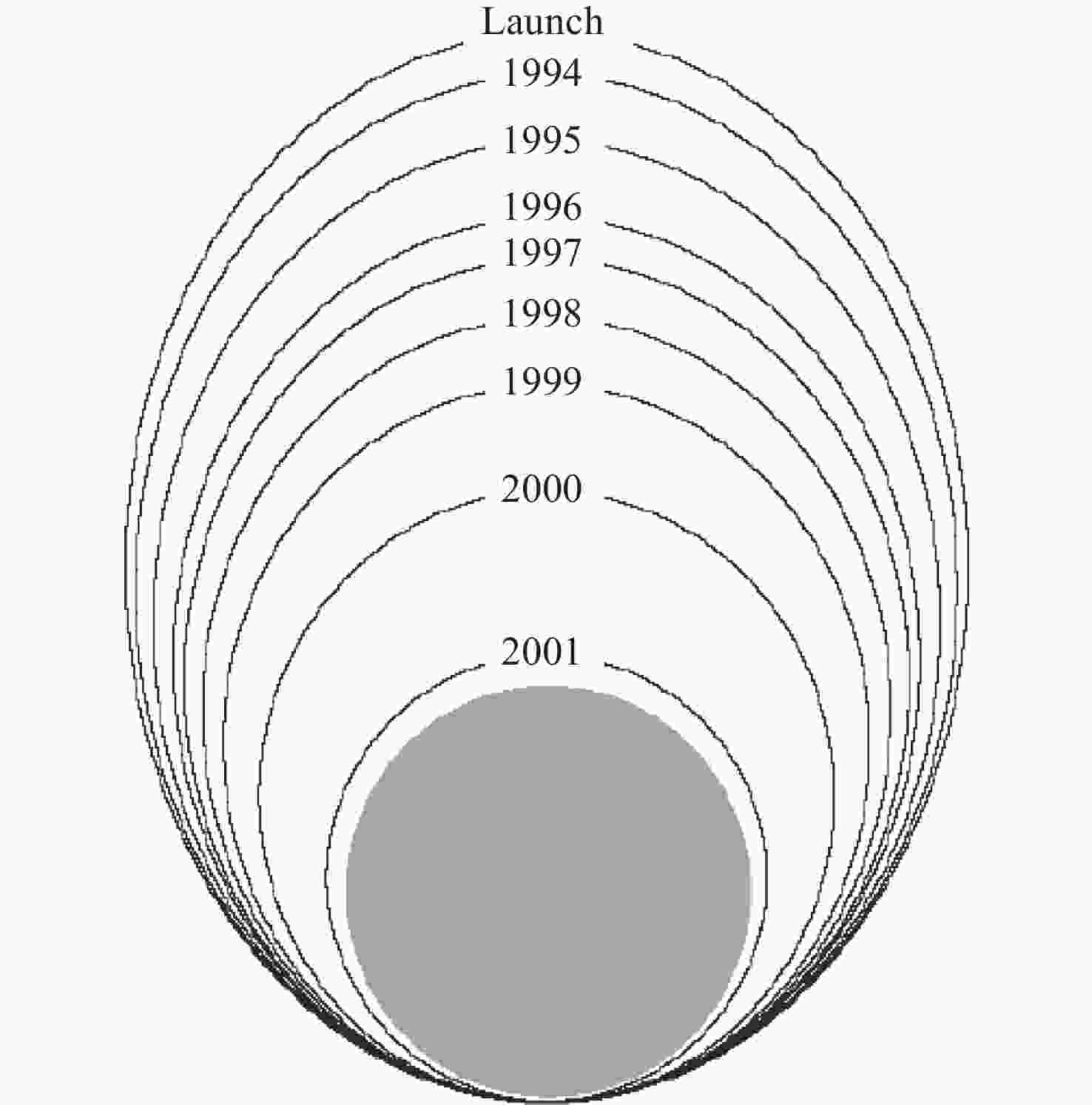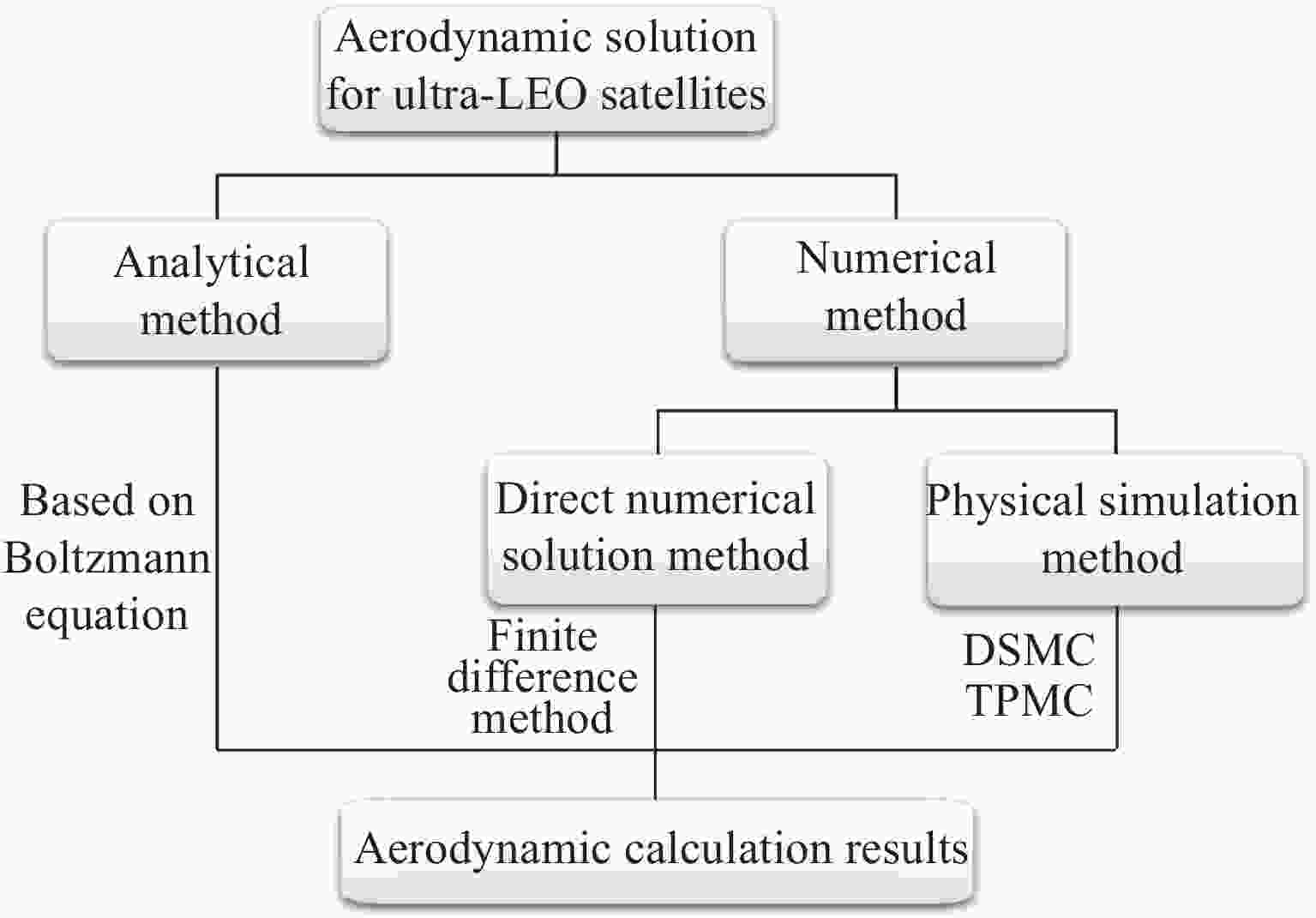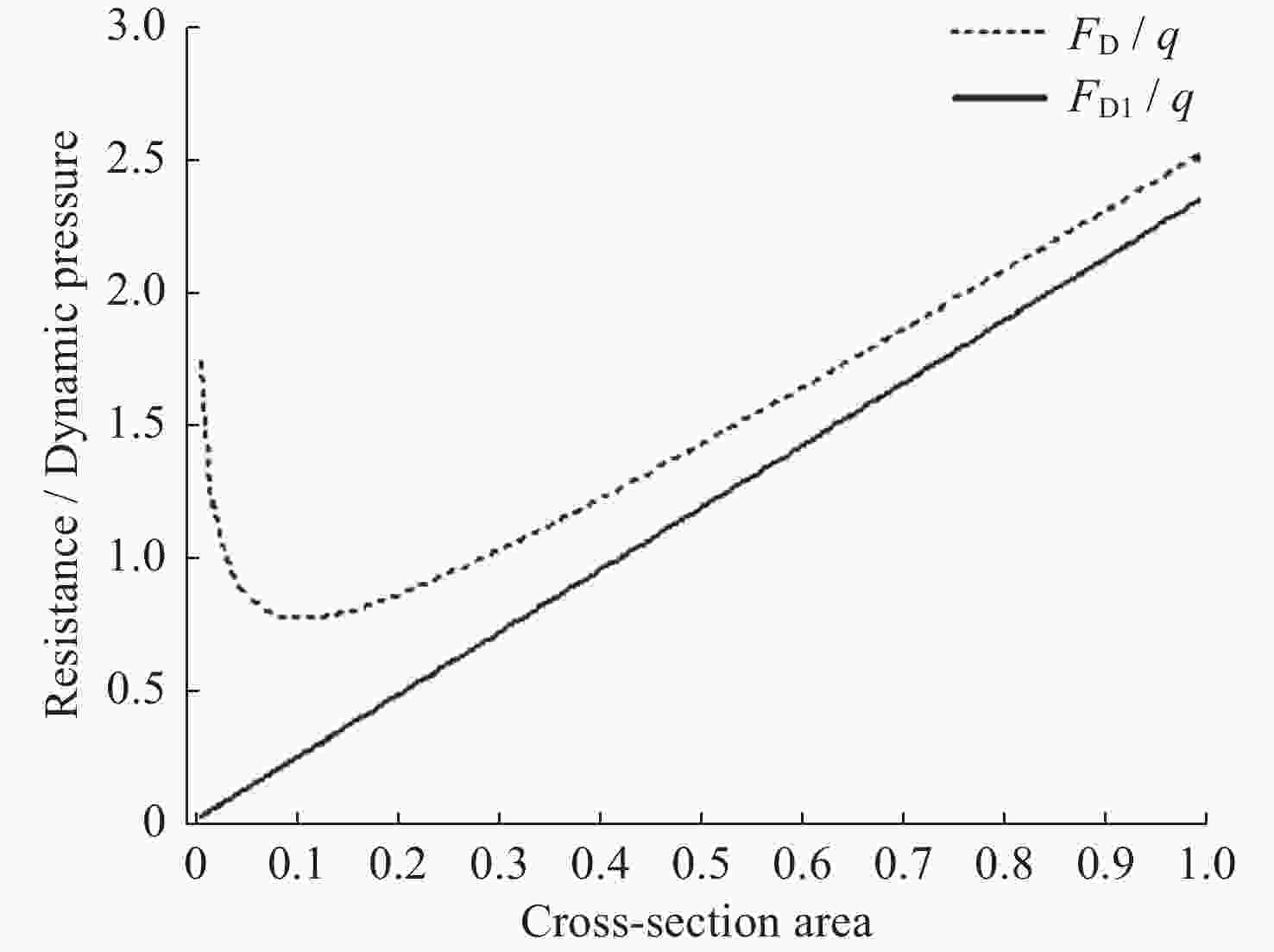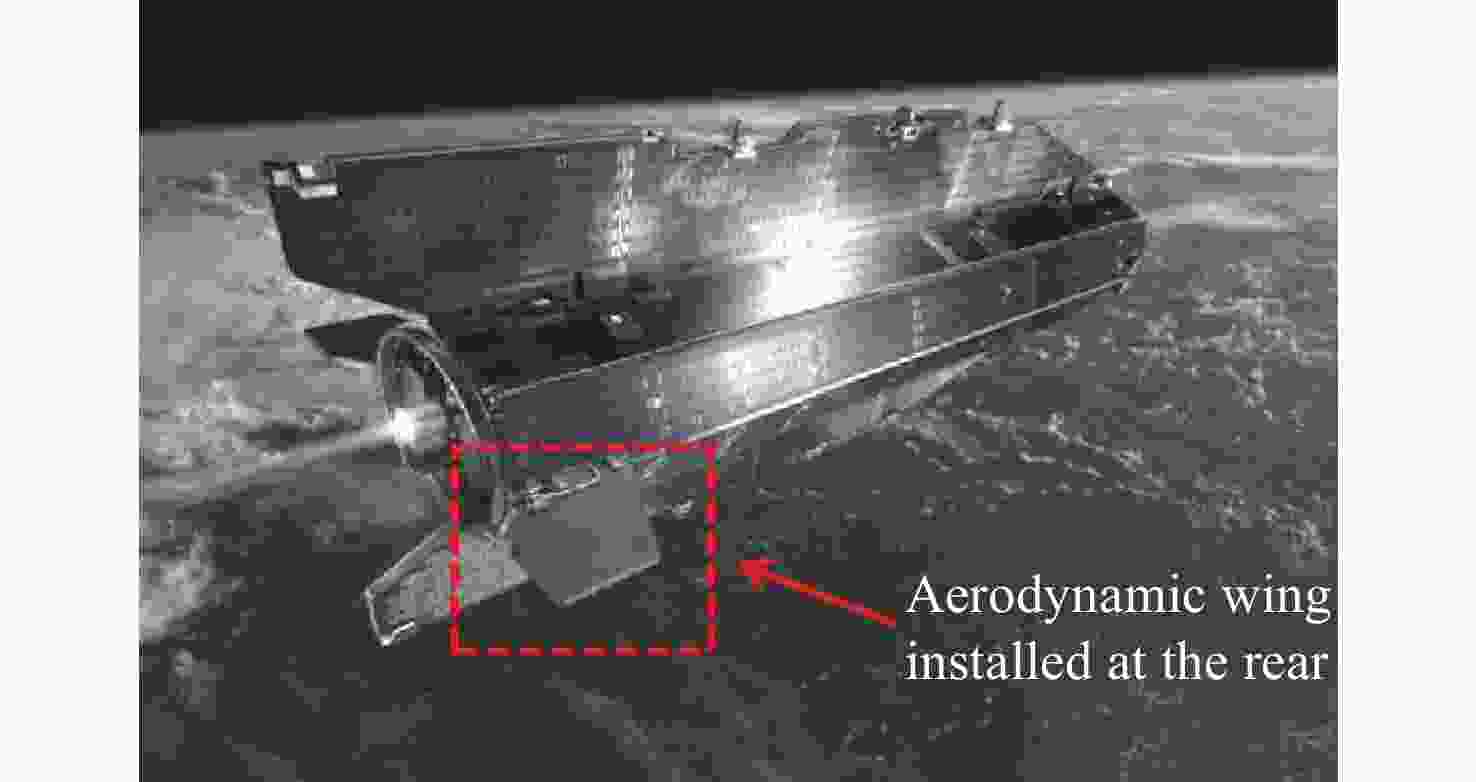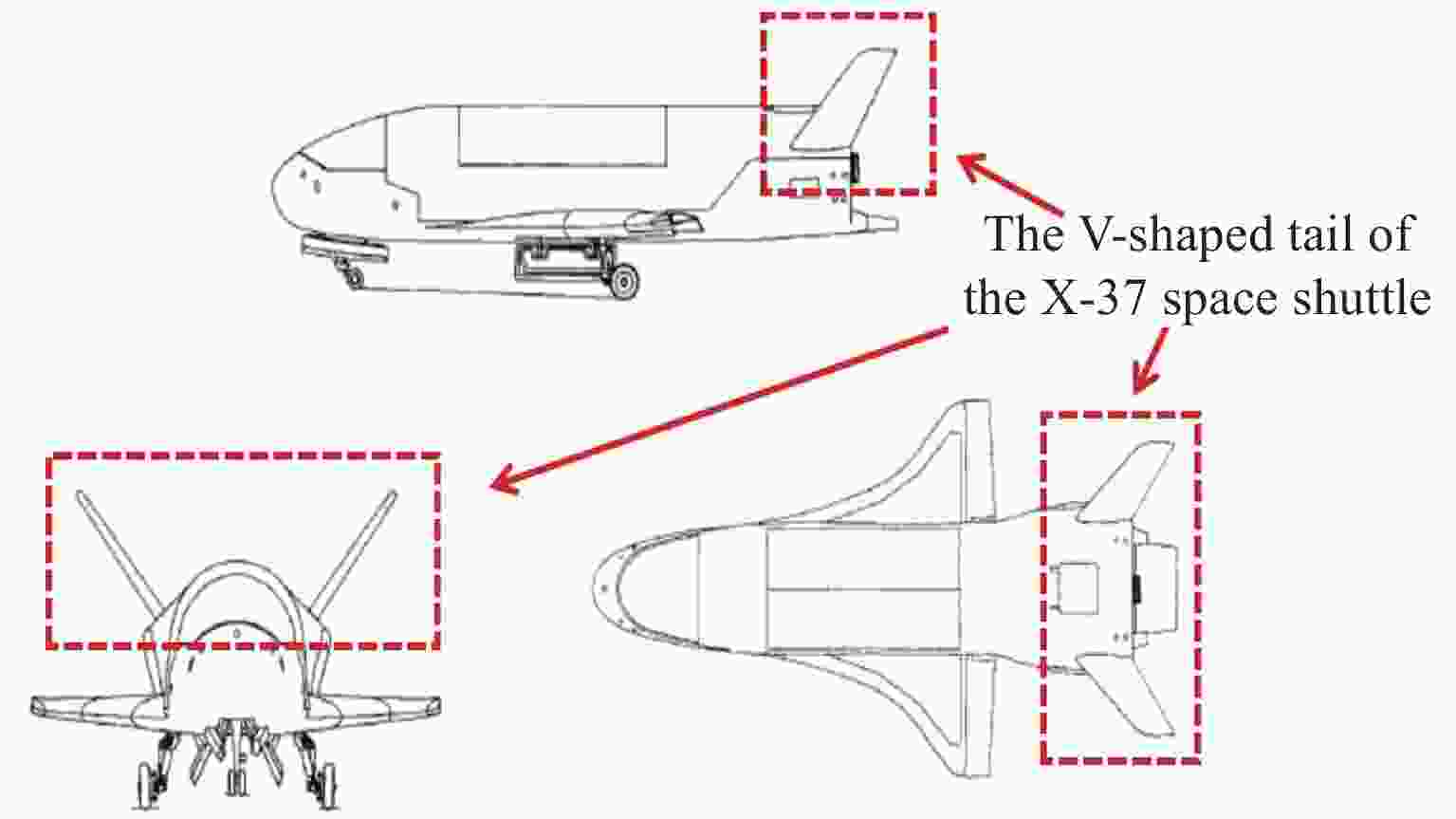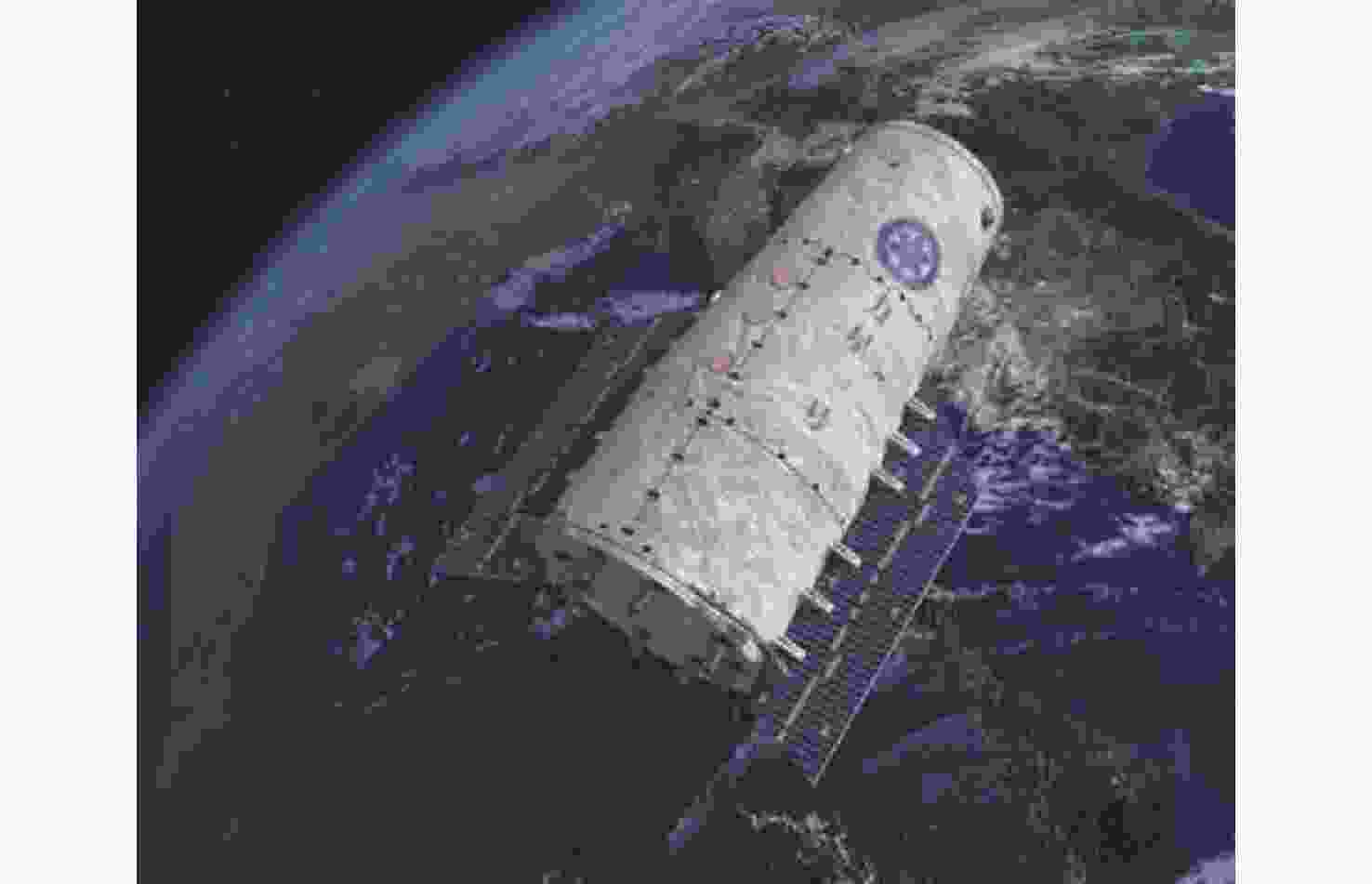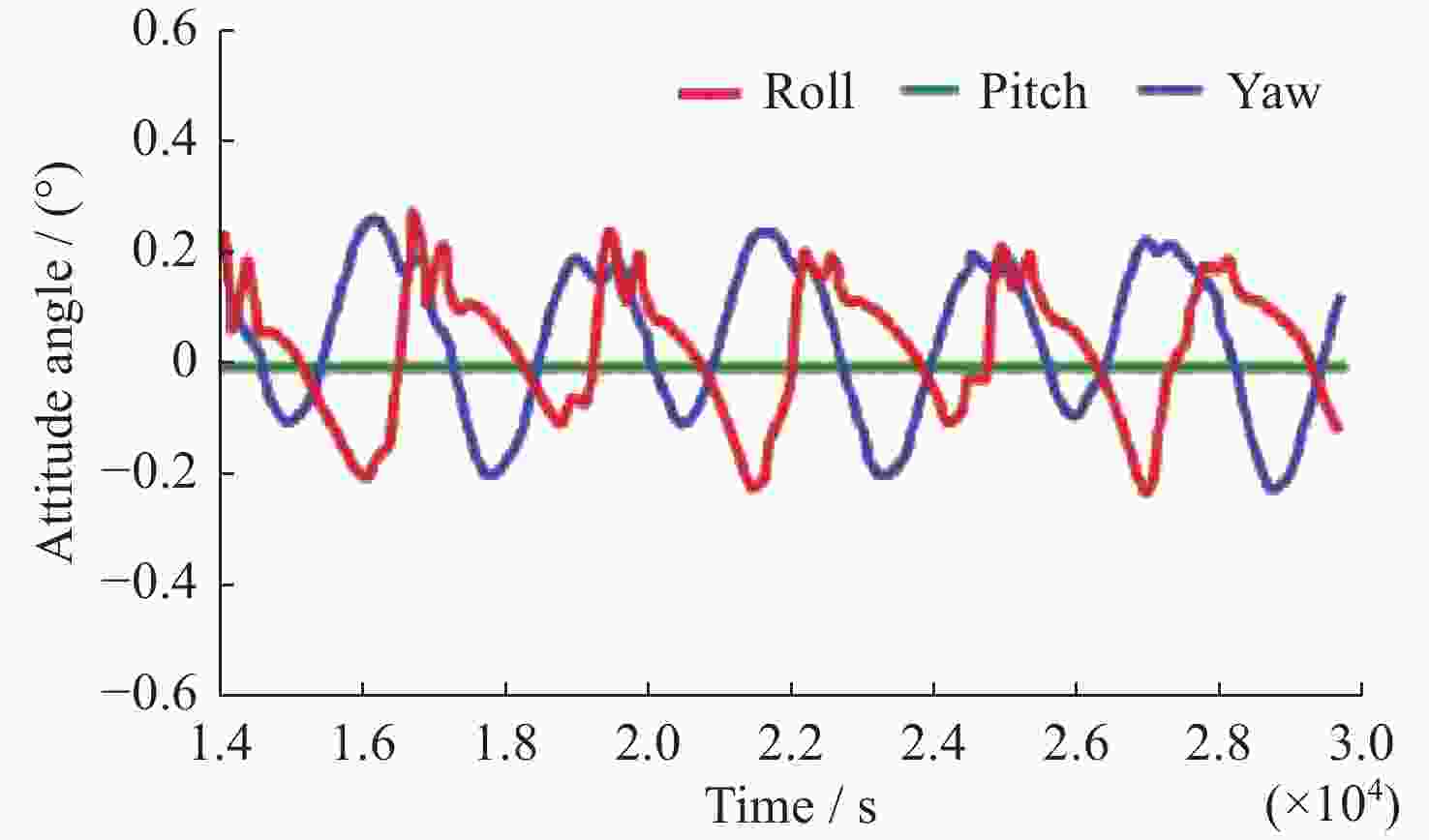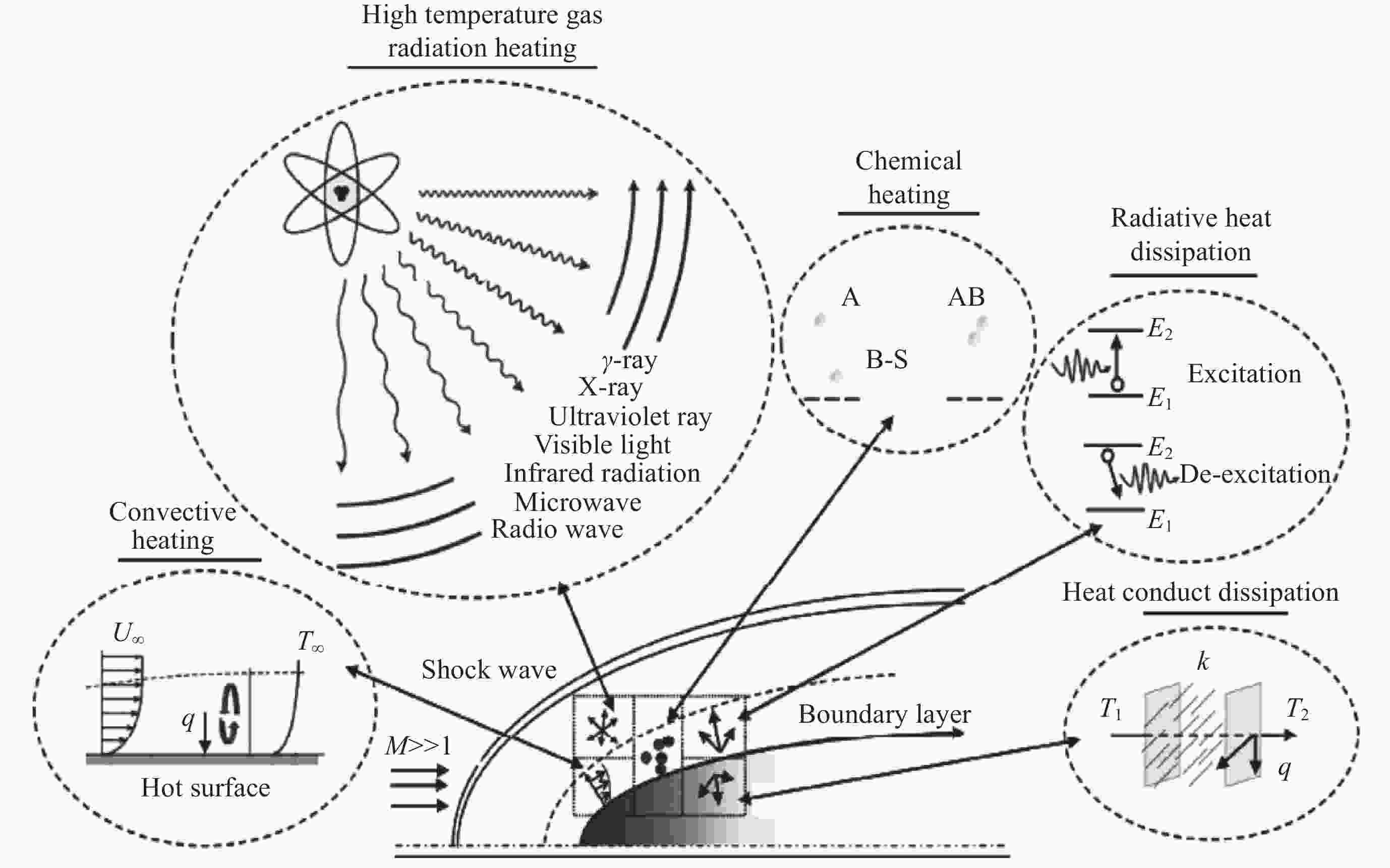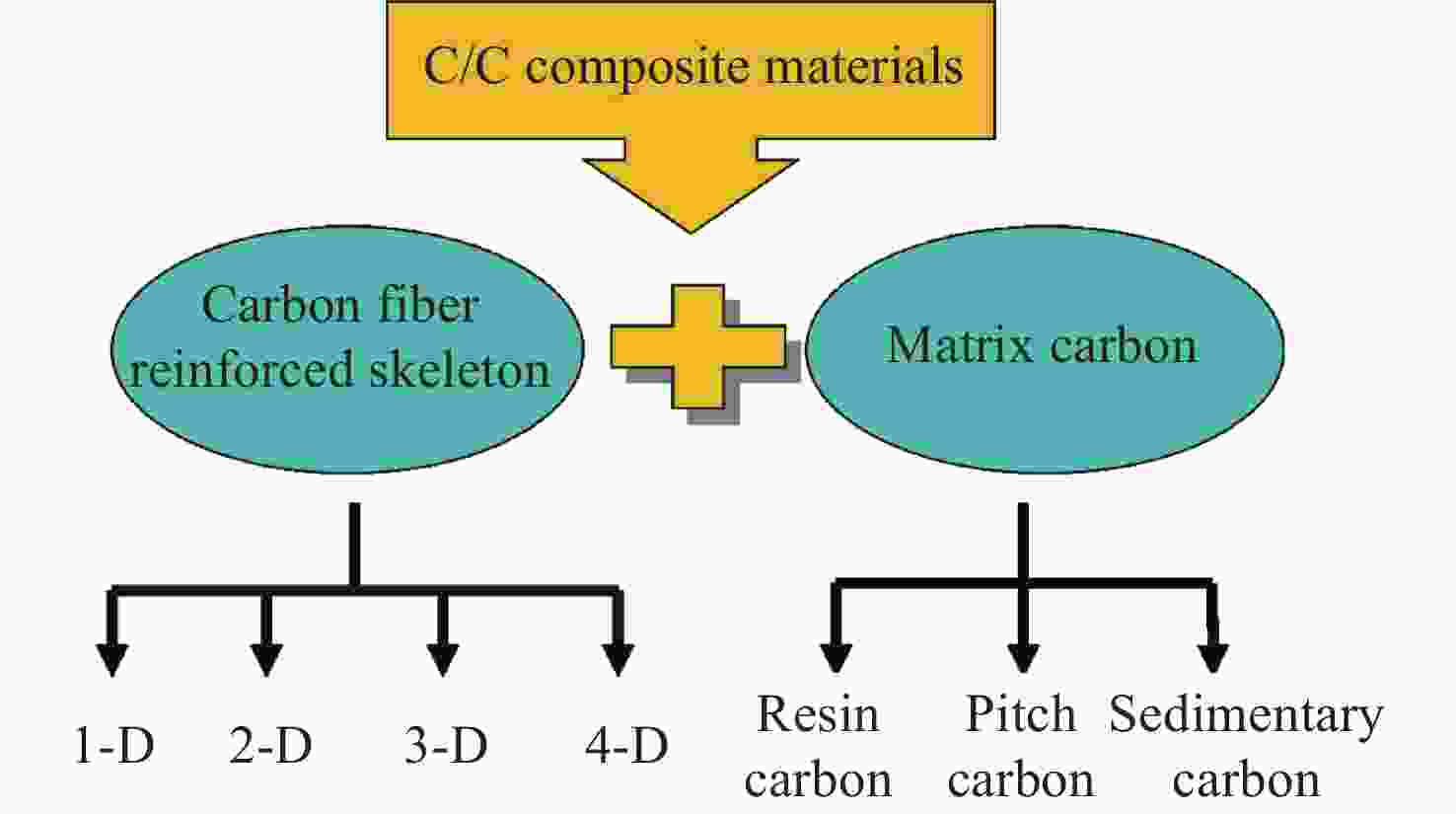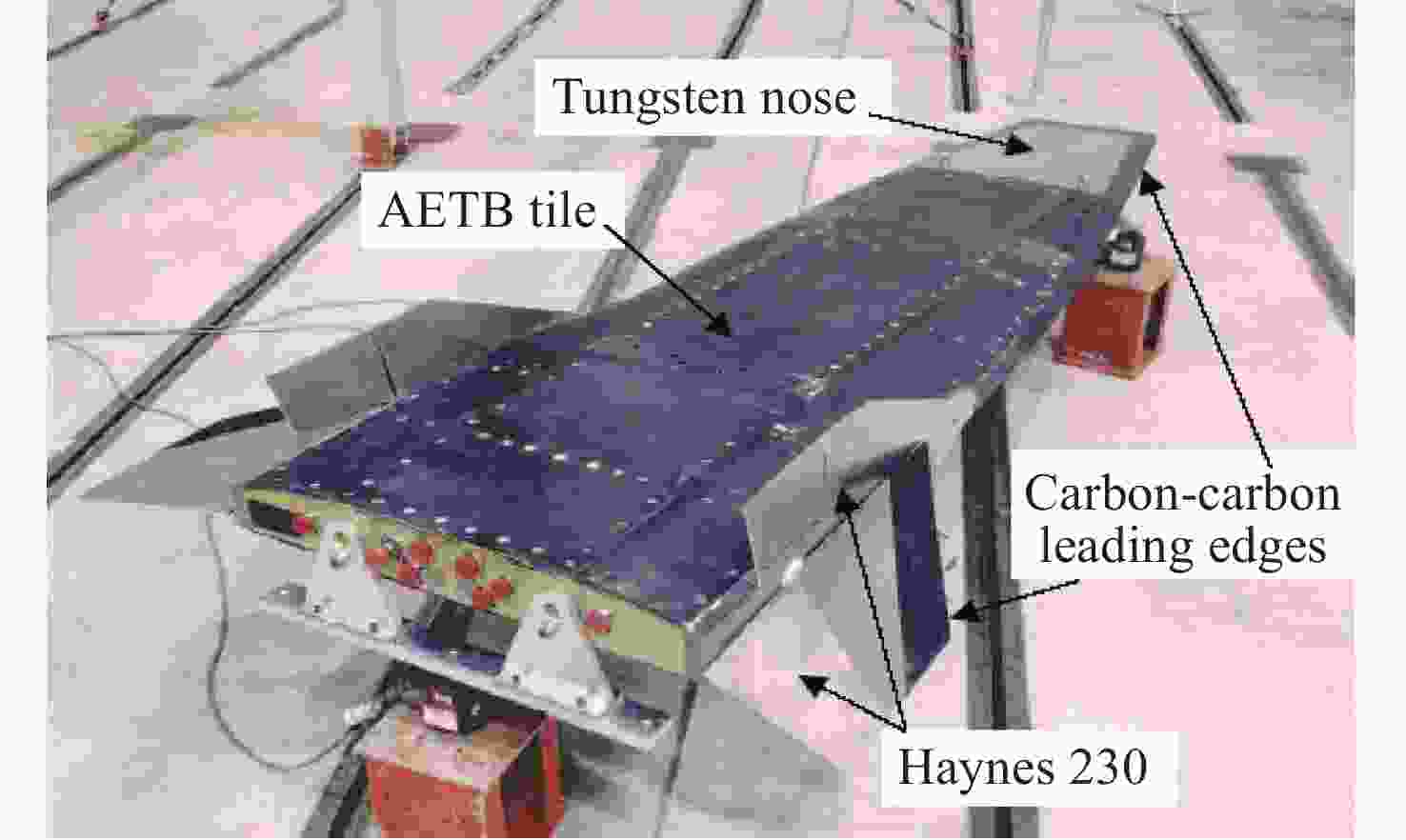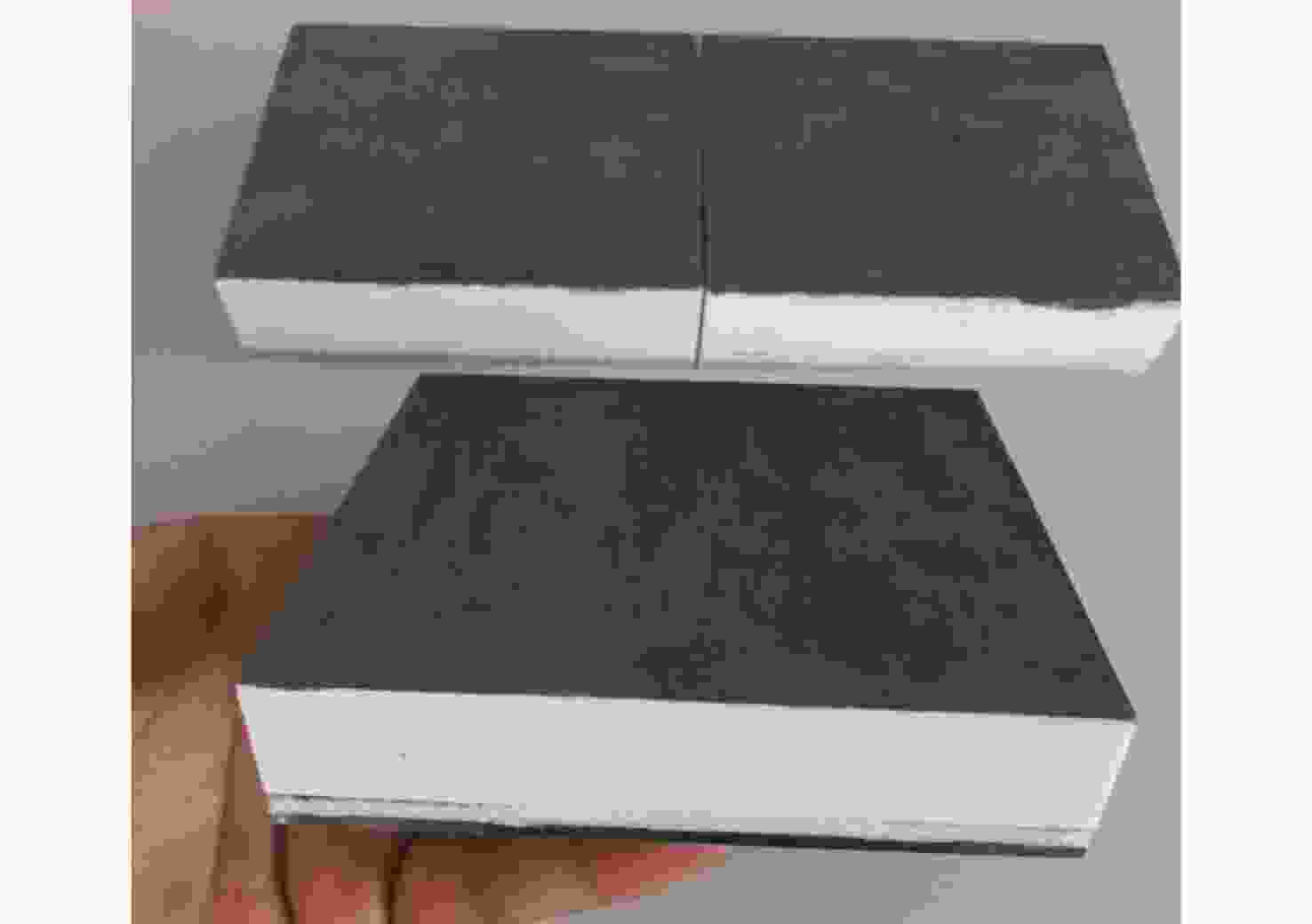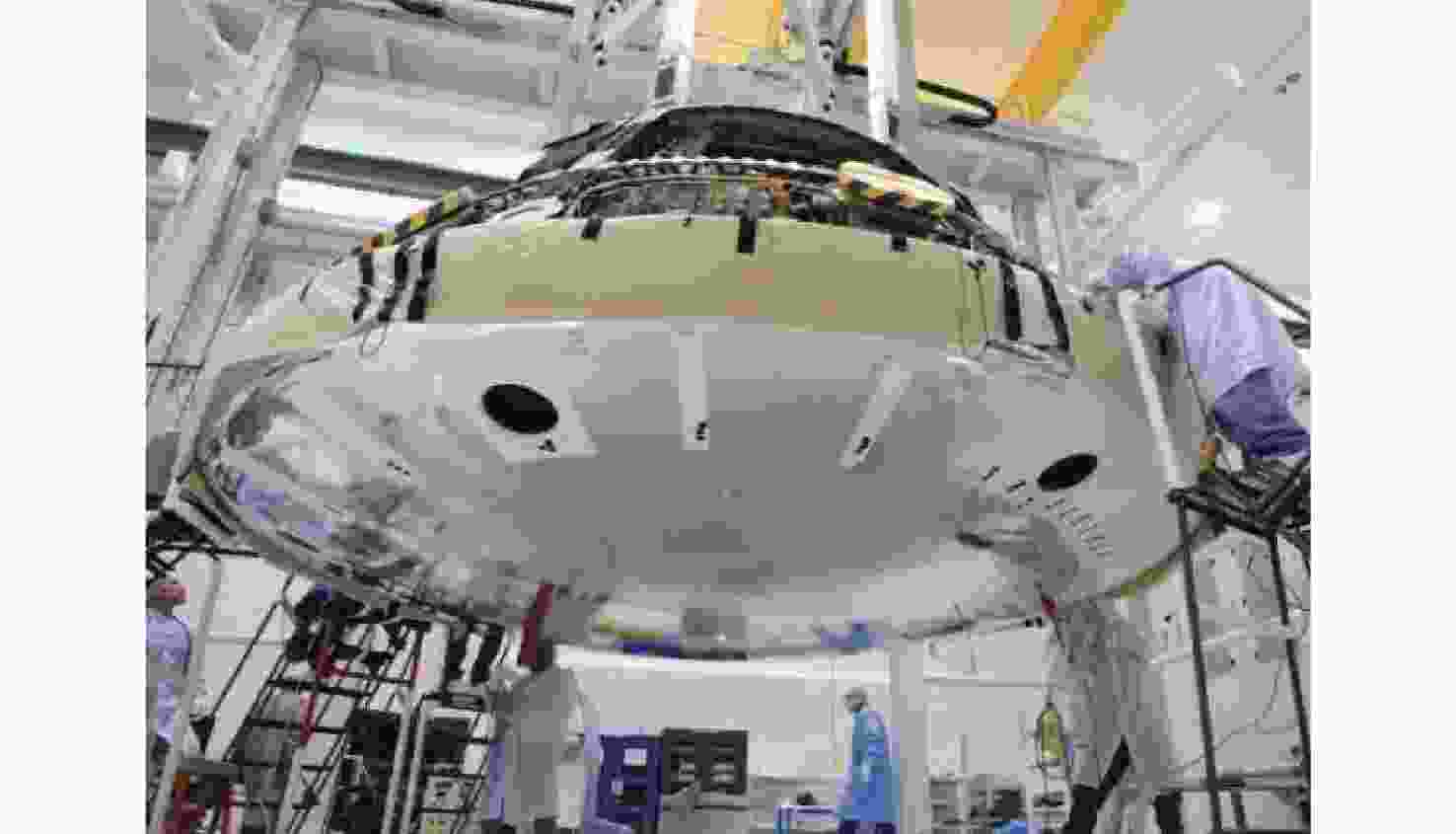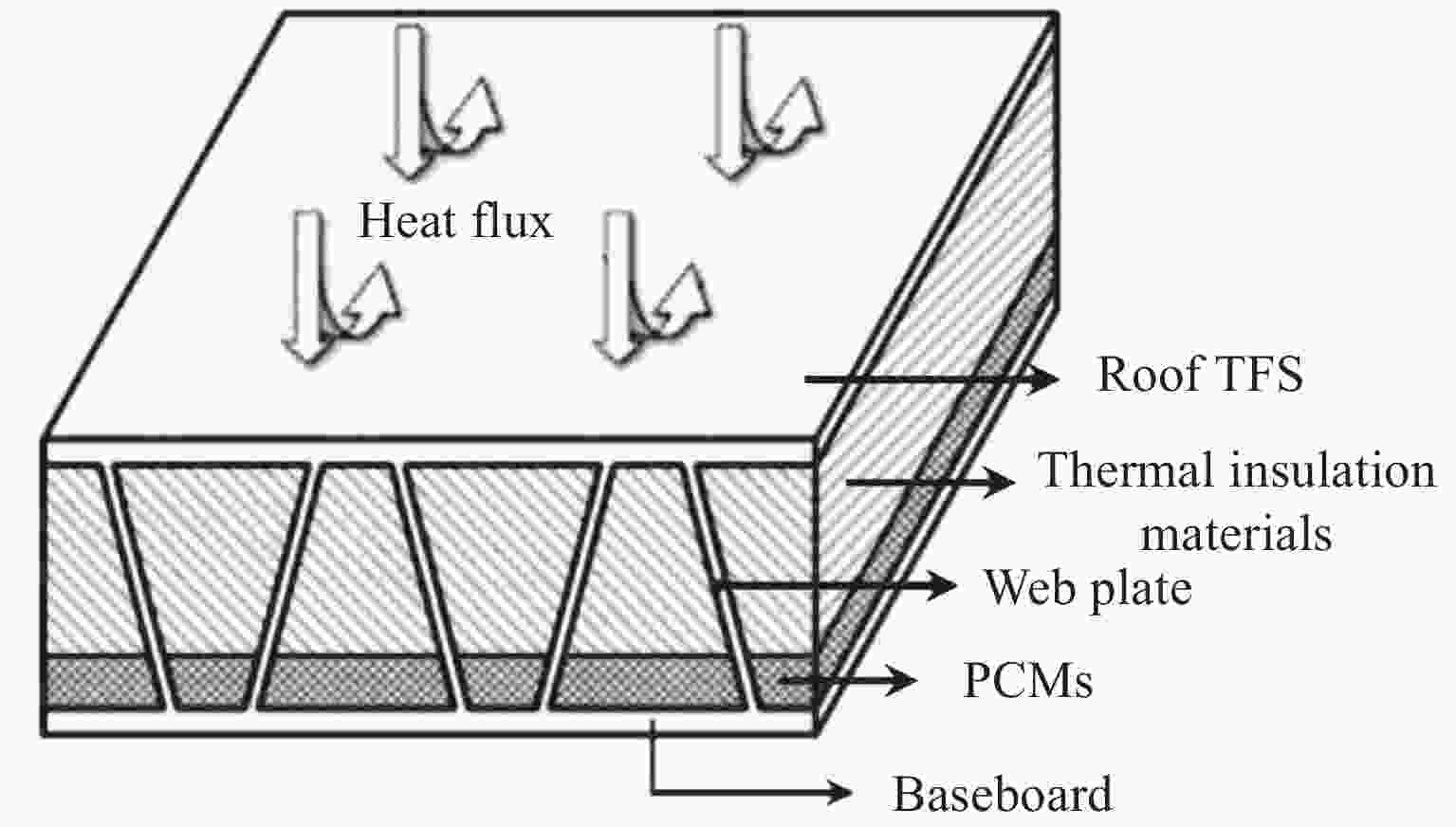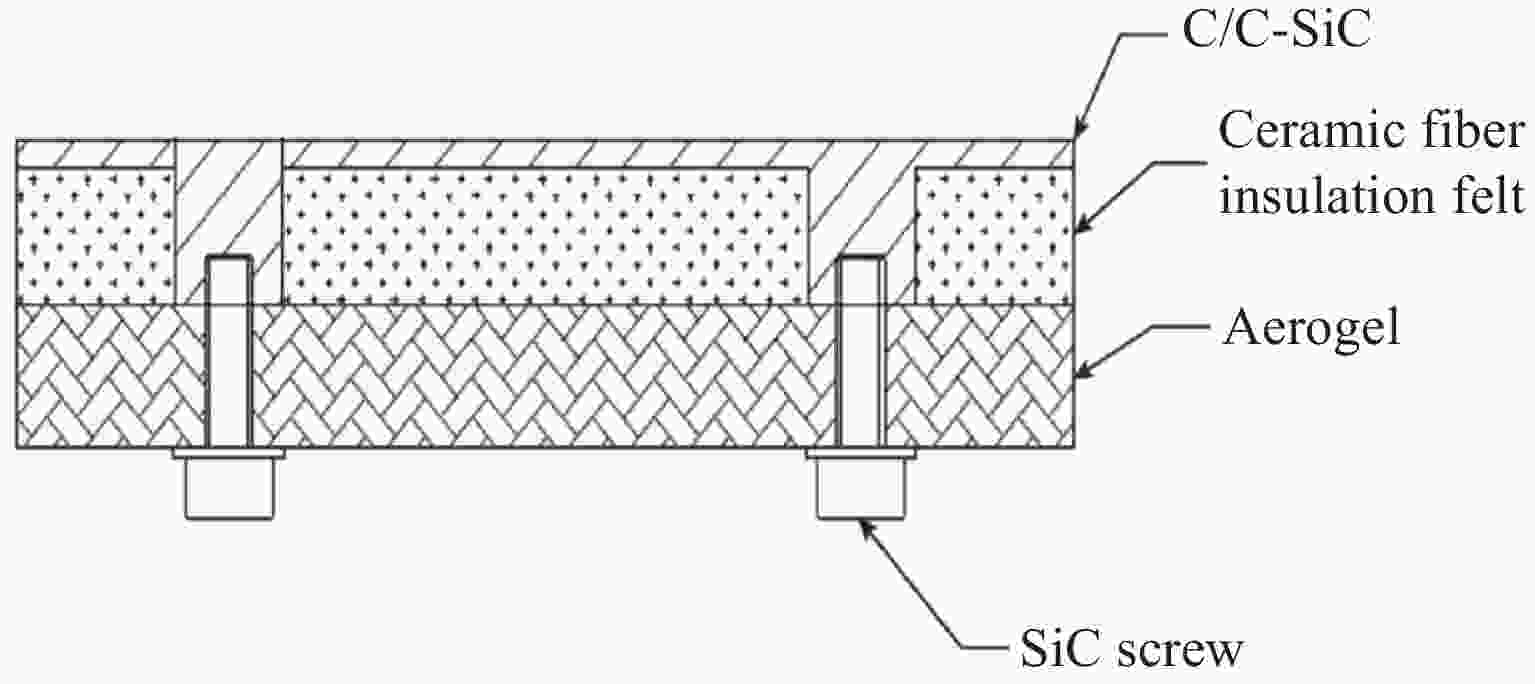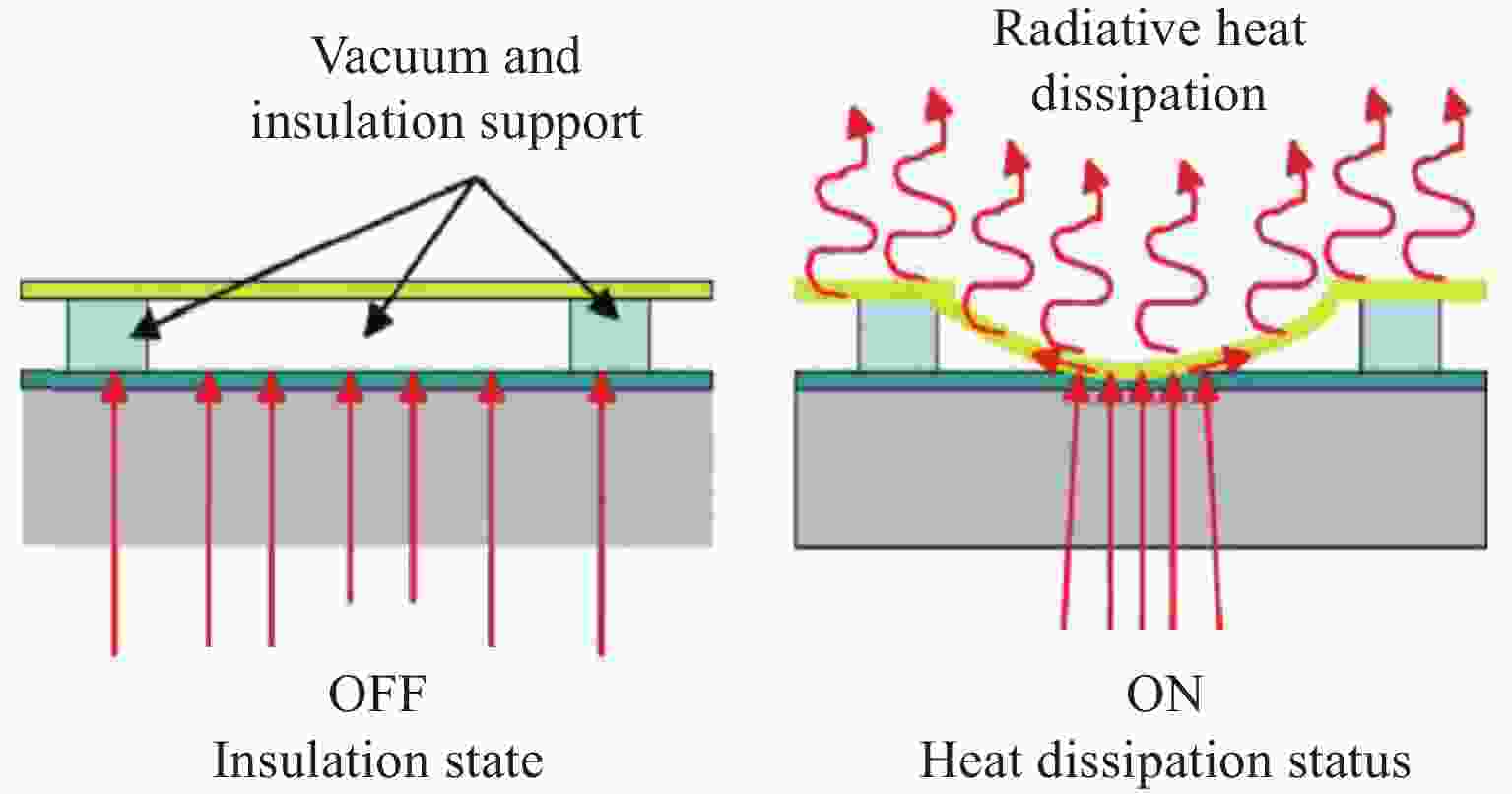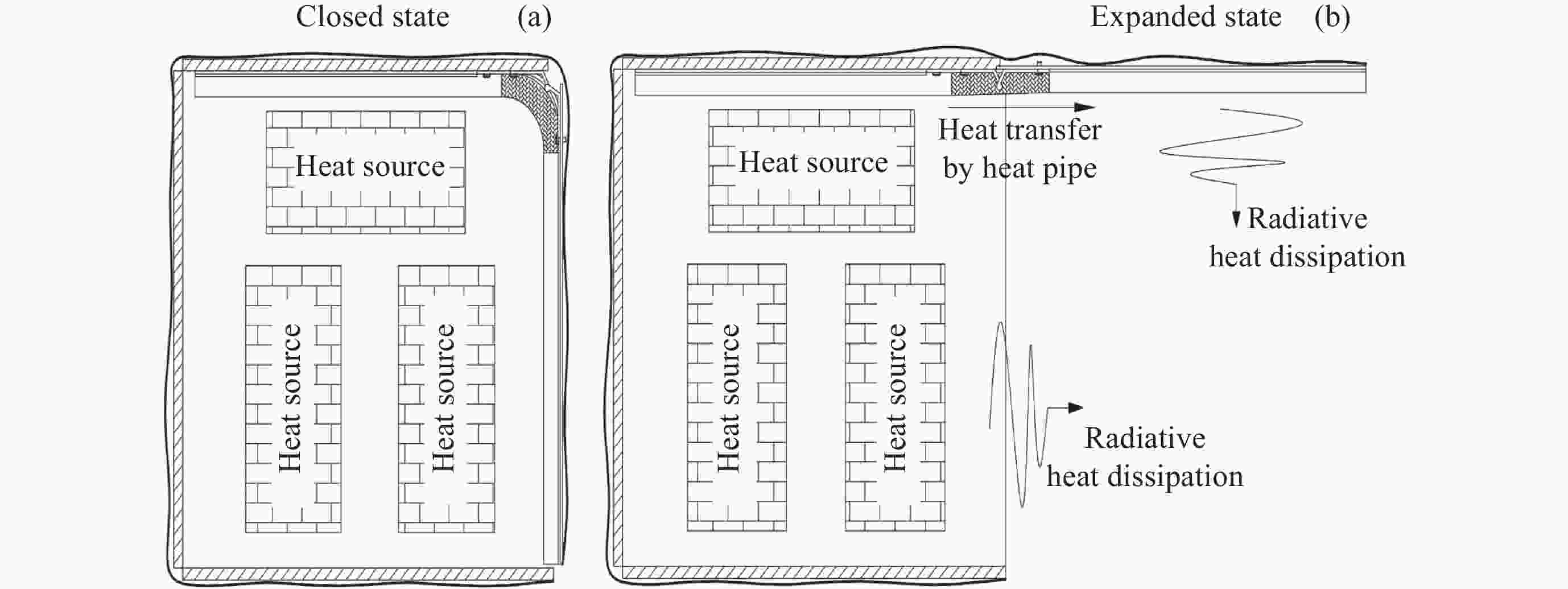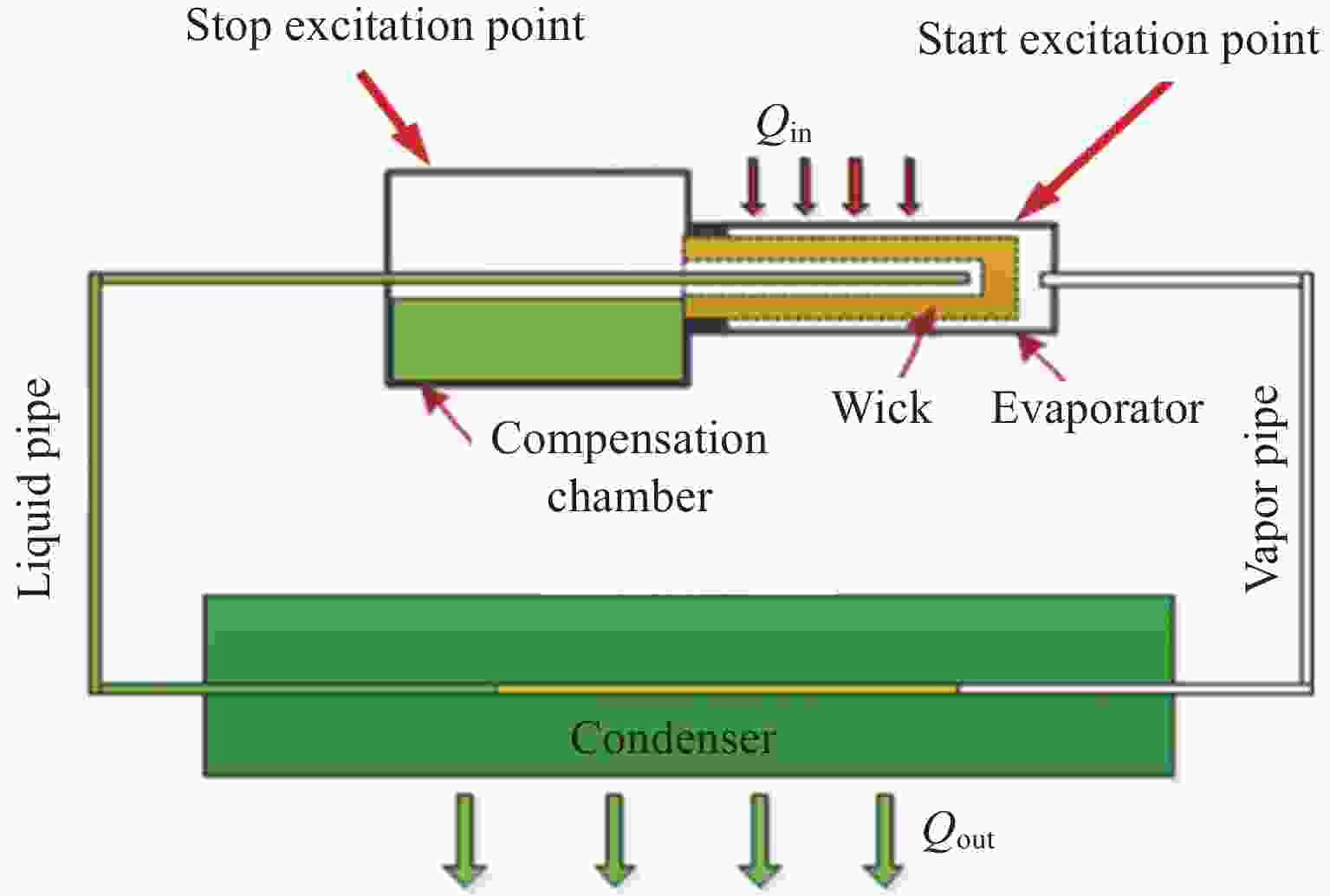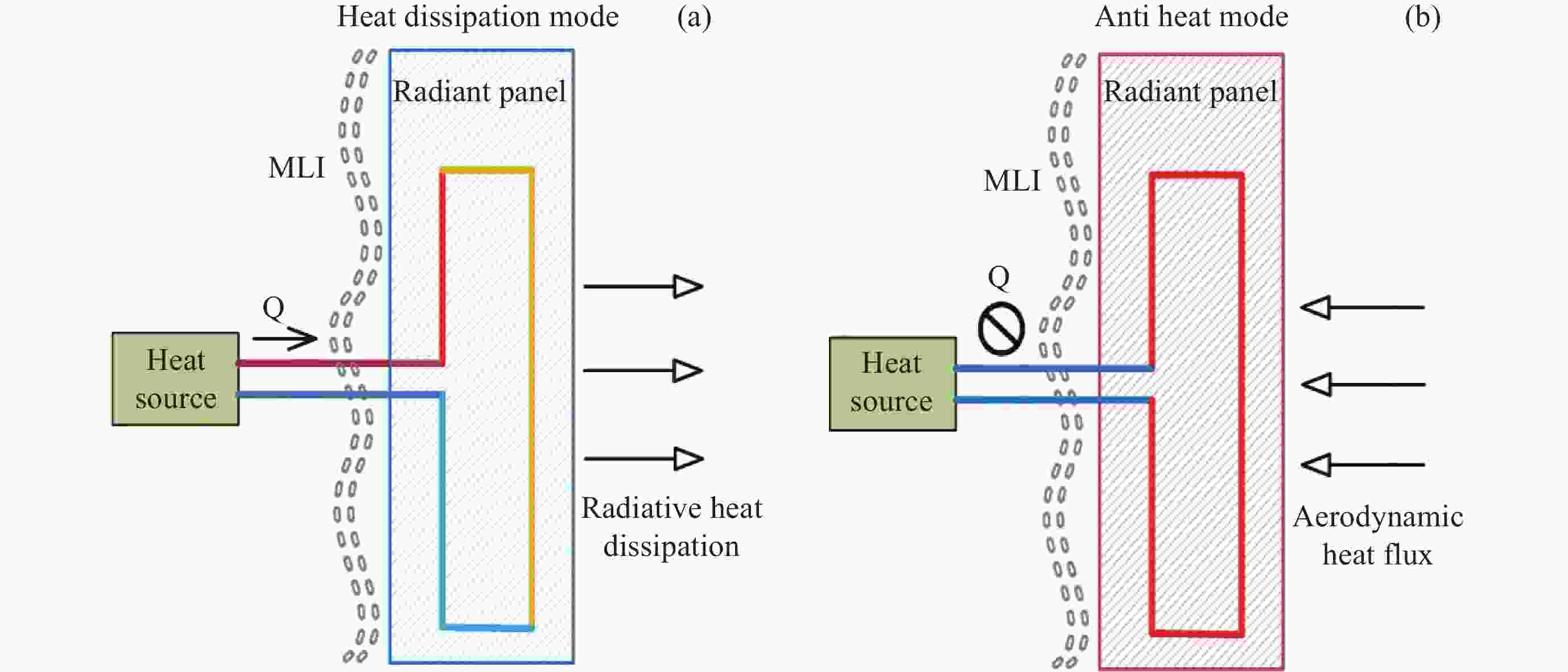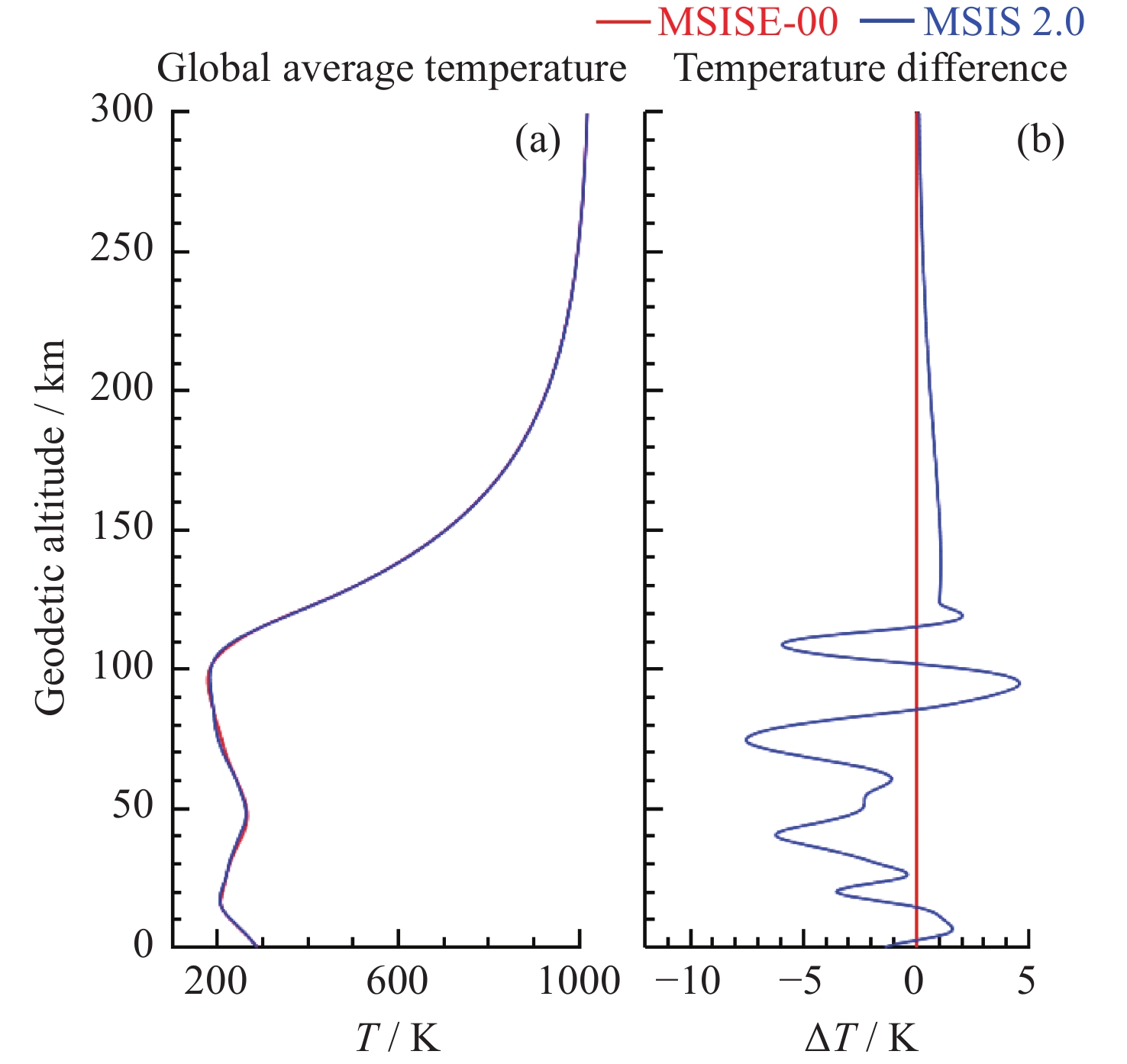超低轨卫星的空间环境特性及其力学与热学关键问题研究进展
doi: 10.11728/cjss2023.04.2022-0010 cstr: 32142.14.cjss2023.04.2022-0010
Development on Space Environment and Its Dynamic and Thermal Problems of Ultra-LEO Satellites
-
摘要: 超低轨道飞行器在遥感、科学研究等领域具有广泛的应用需求,已成为研究热点之一。由于超低轨的特殊空间环境限制,超低轨道飞行器需要面临和解决很多技术难点,主要集中在大气环境预测、气动力、气动热等方面。本文针对典型超低轨飞行器任务,研究了主要的大气模型及反演方法,并对模型数据进行了比对。结合多种气动被动稳定的案例,阐述了气动力计算的方法及气动结构设计的重要影响。介绍了气动设计及在气动干扰下的稳定控制方法,阐述了超低轨卫星的气动热环境、仿真算法以及多种防热复合材料及其应用场景。详细分析了针对超低轨卫星的防热散热可变切换技术,并简要评述了各个方案的优缺点。研究结果有助于推动超低轨道卫星关键技术攻关和试验验证,将超低轨飞行器从试验任务尽快转向空间应用任务。Abstract: Ultra LEO spacecraft has become a hot research field for a wide range of application in military, remote sensing, scientific research, etc. Due to the special space environment of ultra-low orbit, many technical difficulties need to be solved, mainly focusing on atmospheric environment prediction, aerodynamic, aerothermal and so on. The main atmospheric models and inversion methods for typical ultra-low orbit vehicle missions are studied, and the model data is compared. By combining various cases of aerodynamic passive stability, the methods of aerodynamic calculation and the important impact of aerodynamic structural design are investigated. Aerodynamic design and stability control methods under aerodynamic interference are introduced. The aerodynamic thermal environment and simulation algorithms of ultra-low orbit satellites are studied, and various thermal resistant composite materials and their application scenarios are introduced. Detailed analyses were conducted on the technologies for variable switching of heat and heat dissipation for ultra-low orbit satellites, and the advantages and disadvantages of each scheme were briefly reviewed. This review is helpful to promote the key technology research and test demonstration of ultra LEO spacecraft, turning the ultra LEO spacecraft from test mission to space application mission as soon as possible.
-
Key words:
- Ultra-LEO /
- Spacecraft /
- Space environment /
- Atmospheric model /
- Aerodynamic /
- Aerothermal
-
表 1 超低轨飞行器表面的气动热流
Table 1. Aerodynamic heat flux on the surface of ultra-low orbit vehicles
轨道
高度/km各区域的气动热流/(W·m–2) 正面迎风 30°迎风 非迎风侧面 160 300 33 7.7 150 500 55 13 140 910 100 22 135 1300 140 29 130 1900 210 42 120 5100 560 110 110 21000 2300 460 表 2 多层隔热组件的种类及说明
Table 2. Types and descriptions of multi-layer insulation components
多层种类 说明 低温 反射层 聚酯薄膜+金属镀膜(铝、银等) 间隔层 低密度纤维纸或编织物 温度 –200~100℃,短期可至120℃ 中温 反射层 聚酰亚胺膜+金属镀膜(铝、银等) 间隔层 玻璃纤维纸、布等 温度 –200~350℃,短期450℃ 高温 反射层 金属箔(不锈钢、镍、铝) 间隔层 高硅氧布、玻璃纤维布及其织物 温度 –200~1000℃ -
[1] CRISP N, ROBERTS P C E, LIVADIOTTI S, et al. The benefits of very low earth orbit for earth observation missions[J]. Progress in Aerospace Sciences, 2020, 117: 100619 doi: 10.1016/j.paerosci.2020.100619 [2] 王彩云, 廖文和. 隐身卫星的现状及其在空间攻防中的应用[J]. 航天电子对抗, 2011, 27(4): 17-19WANG Caiyun, LIAO Wenhe. Development status and application in space attack-defense of stealthy satellite[J]. Aerospace Electronic Warfare, 2011, 27(4): 17-19 [3] CRISP N H, ROBERTS P C E, ROMANO F, et al. System modelling of very low Earth orbit satellites for Earth observation[J]. Acta Astronautica, 2021, 187: 475-491 doi: 10.1016/j.actaastro.2021.07.004 [4] 吕久明, 路建功, 刁晶晶, 等. 超低轨道卫星技术发展现状及应用[J]. 国防科技, 2020, 41(1): 33-37LV Jiuming, LU Jiangong, DIAO Jingjing, et al. The status quo of ultra-low altitude satellite technology and its future use[J]. National Defense Science Technology, 2020, 41(1): 33-37 [5] KIMOTO Y, YUKUMATSU K, GOTO A, et al. MDM: A flight mission to observe materials degradation in-situ on satellite in super low Earth orbit[J]. Acta Astronautica, 2021, 179: 695-701 doi: 10.1016/j.actaastro.2020.11.048 [6] COESA. USA standard atmosphere 1976[R]. Washington D C: USA Government Printing Office, 1976 [7] JACCHIA L G. Static diffusion models of the upper atmosphere with empirical temperature profiles[J]. Smithsonian Contributions to Astrophysics, 1965, 8(9): 213-257 doi: 10.5479/si.00810231.8-9.213 [8] CHAO C C, GUNNING G R, MOE K, et al. An evaluation of Jacchia 71 and MSIS90 atmosphere models with NASA oderacs decay data[J]. The Journal of the Astronautical Sciences, 1997, 45(2): 131-141 doi: 10.1007/BF03546372 [9] PICONE J M, HEDIN A E, DROB D P, et al. NRLMSISE-00 empirical model of the atmosphere: Statistical comparisons and scientific issues[J]. Journal of Geophysical Research: Space Physics, 2002, 107(A12): SIA 15-1-SIA 15-16 [10] EMMERT J T, DROB D P, PICONE J M, et al. NRLMSIS 2.0: A whole-atmosphere empirical model of temperature and neutral species densities[J]. Earth and Space Science, 2021, 8(3): e2020EA001321 [11] BOWMAN B R, TOBISKA W, MARCOS F A. A new empirical thermospheric density model JB2006 using new solar indices[C]//AIAA/AAS Astrodynamics Specialist Conference and Exhibit. Keystone: AIAA, 2006 [12] BRUINSMA S. The DTM-2013 thermosphere model[J]. Journal of Space Weather and Space Climate, 2015, 5: A1 doi: 10.1051/swsc/2015001 [13] 靳旭红, 黄飞, 程晓丽, 等. 超低地球轨道卫星大气阻力预测与影响因素分析[J]. 清华大学学报(自然科学版), 2020, 60(3): 219-226JIN Xuhong, HUANG Fei, CHENG Xiaoli, et al. Atmospheric drag on satellites flying in lower low-earth orbit[J]. Journal of Tsinghua University (Science and Technology), 2020, 60(3): 219-226 [14] DOORNBOS E. Thermospheric Density and Wind Determination from Satellite Dynamics[M]. Berlin, Heidelberg: Springer, 2012 [15] BRUINSMA S, BIANCALE R. Total densities derived from accelerometer data[J]. Journal of Spacecraft and Rockets, 2003, 40(2): 230-236 doi: 10.2514/2.3937 [16] PICONE J M, EMMERT J T, LEAN J L. Thermospheric densities derived from spacecraft orbits: Accurate processing of two-line element sets[J]. Journal of Geophysical Research: Space Physics, 2005, 110(A3): A03301 [17] MOE K, MOE M M. Gas-surface interactions and satellite drag coefficients[J]. Planetary and Space Science, 2005, 53(8): 793-801 doi: 10.1016/j.pss.2005.03.005 [18] BIRD G A. Approach to translational equilibrium in a rigid sphere gas[J]. Physics of Fluids, 1963, 6(10): 1518-1519 doi: 10.1063/1.1710976 [19] BIRD G A. Application of the direct simulation Monte Carlo method to the full shuttle geometry[C]//5th Joint Thermophysics and Heat Transfer Conference. Seattle: AIAA, 1990 [20] 王丹. 飞行器气动外形优化设计方法研究与应用[D]. 西安: 西北工业大学, 2015WANG Dan. Approache and Application Research on Aerodynamic Shape Optimization Design[D]. Xi’an: Northwestern Polytechnical University, 2015 [21] 周伟勇, 张育林, 刘昆. 超低轨航天器气动力分析与减阻设计[J]. 宇航学报, 2010, 31(2): 342-348 doi: 10.3873/j.issn.1000-1328.2010.02.007ZHOU Weiyong, ZHANG Yulin, LIU Kun. Aerodynamics analysis and reduced drag design for the lower LEO spacecraft[J]. Journal of Astronautics, 2010, 31(2): 342-348 doi: 10.3873/j.issn.1000-1328.2010.02.007 [22] 胡凌云, 张立华, 程晓丽, 等. 超低轨航天器气动设计与计算方法探讨[J]. 航天器工程, 2016, 25(1): 10-18HU Lingyun, ZHANG Lihua, CHENG Xiaoli, et al. Method of aerodynamic design and calculation for ultra-LEO spacecraft[J]. Spacecraft Engineering, 2016, 25(1): 10-18 [23] 曾其鋆. 气动力矩在超低轨道卫星姿态控制方面的应用研究[D]. 哈尔滨: 哈尔滨工业大学, 2009ZENG Qiyun. Applications of Aerodynamic Torque to Ultra-Low-Orbit Satellite Attitude Control[D]. Harbin: Harbin Institute of Technology, 2009 [24] 吴宏鑫, 谈树萍. 航天器控制的现状与未来[J]. 空间控制技术与应用, 2012, 38(5): 1-7WU Hongxin, TAN Shuping. Spacecraft control: present and future[J]. Aerospace Control and Application, 2012, 38(5): 1-7 [25] SCHLANBUSCH R, LORIA A, KRISTIANSEN R, et al. PD+ based output feedback attitude control of rigid bodies[J]. IEEE Transactions on Automatic Control, 2012, 57(8): 2146-2152 doi: 10.1109/TAC.2012.2183189 [26] LAMBERT C, KUMAR B S, HAMEL J F, et al. Implementation and performance of formation flying using differential drag[J]. Acta Astronautica, 2012, 71: 68-82 doi: 10.1016/j.actaastro.2011.08.013 [27] WISSINK J G. DNS of separating, low reynolds number flow in a turbine cascade with incoming wakes[J]. International Journal of Heat and Fluid Flow, 2003, 24(4): 626-635 doi: 10.1016/S0142-727X(03)00056-0 [28] RASKY D J, MILOS F S, SQUIRE T H. Thermal protection system materials and costs for future reusable launch vehicles[J]. Journal of Spacecraft and Rockets, 2001, 38(2): 294-296 doi: 10.2514/2.3686 [29] MARSHALL L, CORPENING G, SHERRILL R. A chief engineer’s view of the NASA X-43 A scramjet flight test[C]//AIAA/CIRA 13 th International Space Planes and Hypersonics Systems and Technologies Conference. Capua: AIAA, 2005 [30] 贾献峰, 刘旭华, 乔文明, 等. 酚醛浸渍碳烧蚀体(PICA)的制备、结构及性能[J]. 宇航材料工艺, 2016, 46(1): 77-80,90 doi: 10.3969/j.issn.1007-2330.2016.01.013JIA Xianfeng, LIU Xuhua, QIAO Wenming, et al. Preparation and properties of phenolic impregnated carbon ablator[J]. Aerospace Materials & Technology, 2016, 46(1): 77-80,90 doi: 10.3969/j.issn.1007-2330.2016.01.013 [31] 黄文宣, 邱慧, 刘峰, 等. 深空探测器防热承力一体化大底结构研究[J]. 航天返回与遥感, 2019, 40(6): 19-25HUANG Wenxuan, QIU Hui, LIU Feng, et al. Research on thermal-structural integrated heatshield structure for deep space explorer[J]. Spacecraft Recovery & Remote Sensing, 2019, 40(6): 19-25 [32] BAPANAPALLI S K, MARTINEZ O, GOGU C, et al. Analysis and design of corrugated-core sandwich panels for thermal protection systems of space vehicles[C]//47 th AIAA/ASME/ASCE/AHS/ASC Structures, Structural Dynamics, and Materials Conference, Newport, Rhode Island: AIAA, 2006 [33] 贾芳, 冀晓鹃, 彭浩然, 等. 发射率可变的智能热控涂层研究进展[J]. 热喷涂技术, 2017, 9(2): 9-16JIA Fang, JI Xiaojuan, PENG Haoran, et al. The development of variable emissivity smart thermal control coating[J]. Thermal Spray Technology, 2017, 9(2): 9-16 [34] 郭亮, 张旭升, 黄勇, 等. 空间热开关在航天器热控制中的应用与发展[J]. 光学 精密工程, 2015, 23(1): 216-229 doi: 10.3788/OPE.20152301.0216GUO Liang, ZHANG Xusheng, HUANG Yong, et al. Applications and development of space heat switches in spacecraft thermal control[J]. Optics and Precision Engineering, 2015, 23(1): 216-229 doi: 10.3788/OPE.20152301.0216 [35] 刘欣, 梁新刚. 可展开式辐射器热控对航天器轨道调整的适应性分析[J]. 宇航学报, 2021, 42(3): 390-396 doi: 10.3873/j.issn.1000-1328.2021.03.014LIU Xin, LIANG Xingang. Adaptability analysis of deployable radiator thermal control system to spacecraft orbit adjustment[J]. Journal of Astronautics, 2021, 42(3): 390-396 doi: 10.3873/j.issn.1000-1328.2021.03.014 -
-





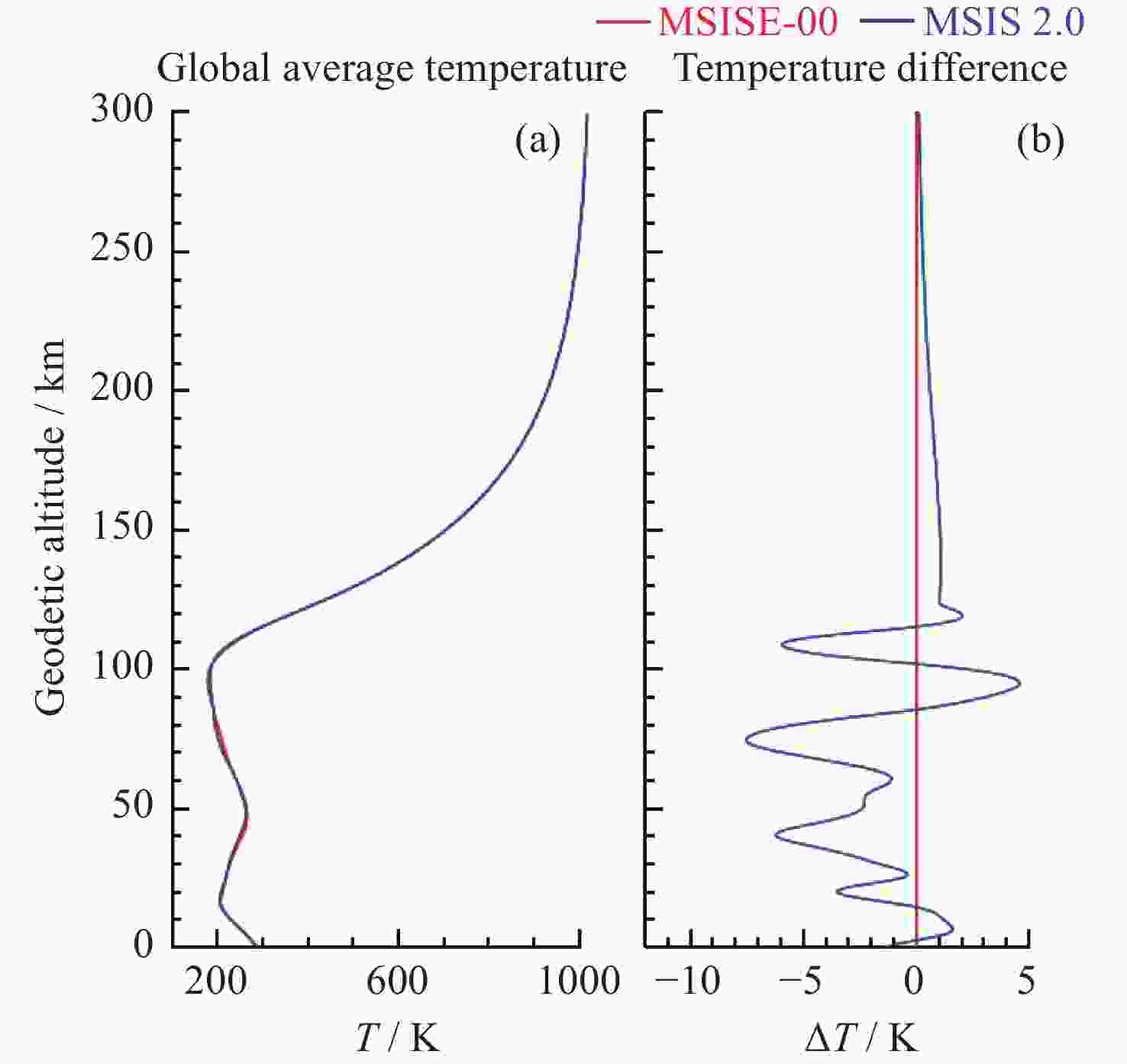
 下载:
下载:
